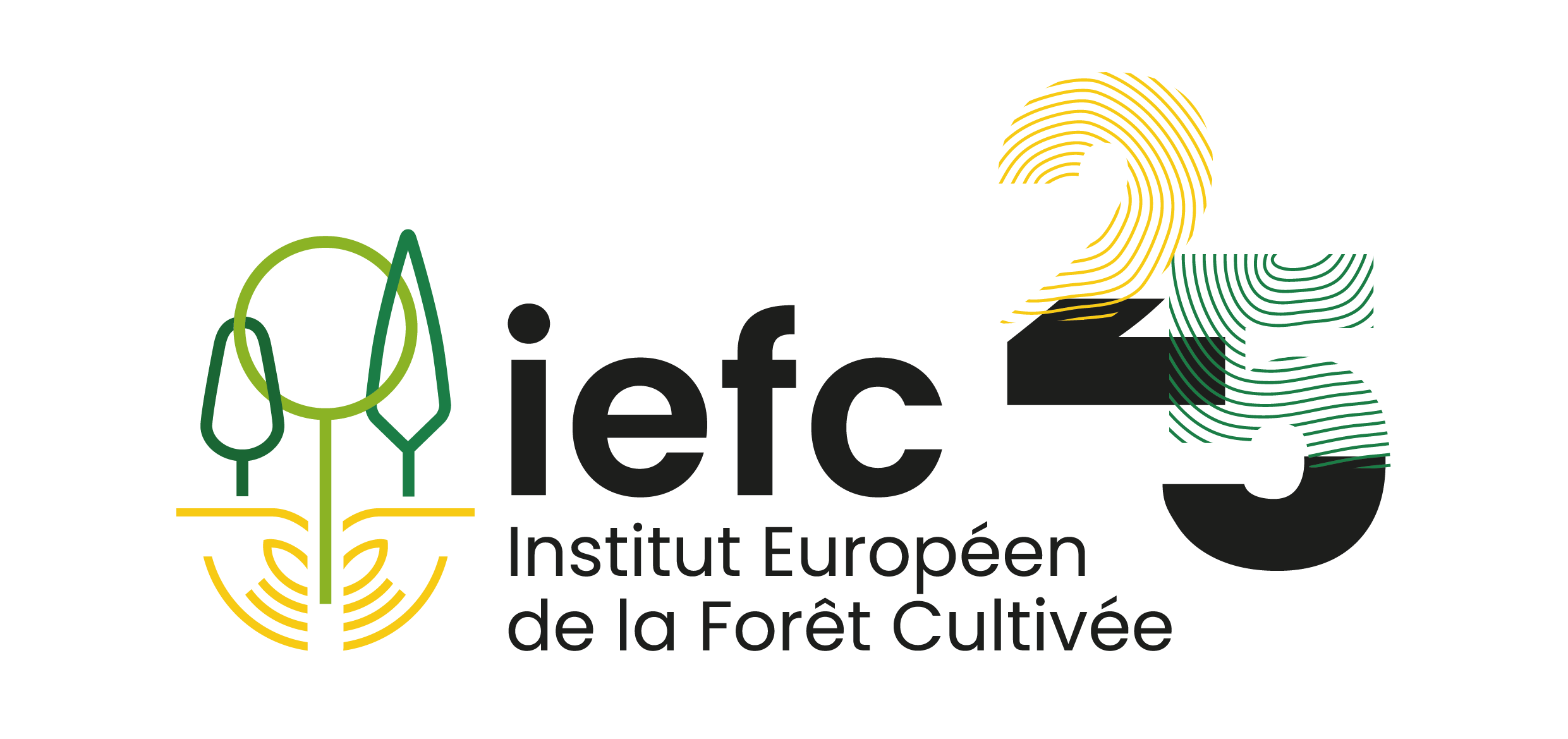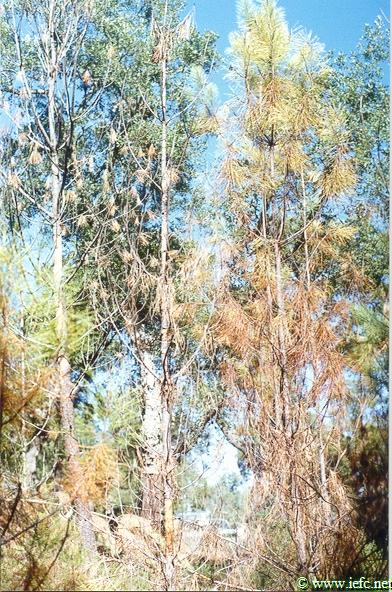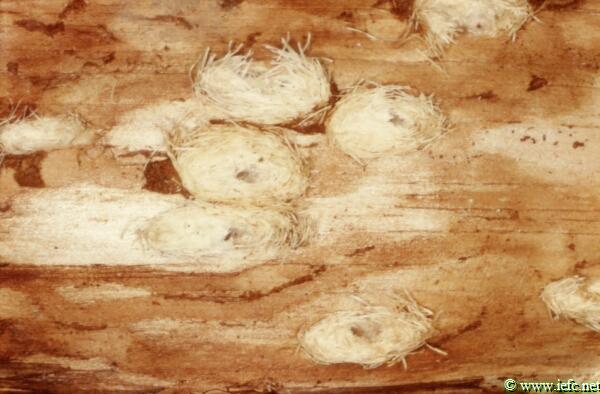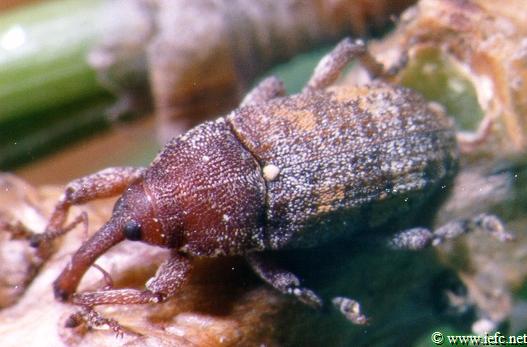Pine weevil
Pissodes castaneus (De Geer) (Coleoptera, Curculionidae)
synonyms: Pissodes notatus
Host tree
All pine species (Pinus).
Identification
- Presence of resin drops on the trunk associated with feeding by adults and oviposition activity.
- Yellowing and fall of needles resulting in decreased canopy coverage. The crown discolouration evolves from the top to the base (Photo 1).
- Parts of the bark tend to release due to trunk dryness.
- Under the bark galleries with legless, yellowish-white, C-shaped larvae with a reddish head (at maximum 1 cm long).
- Presence of typical, oval shaped pupal chambers (about 1 cm long), that are stuffed with long rolled wood fibres (Photo 2 & 3).
- Small round exit holes in the bark (made by adults that emerged from the underlying pupal chambers).
- Small brown adult weevils (6-9mm) with white-yellow spots on the elytra, and with the antennae implanted halfway the snout (Photo 4).
Damage
- High infestation leads to the death of young trees (up to 15 years).
- In older trees this weevil appears as a secondary pest for example after bark beetles attacks.
Biology
- There are one or two generations per year. In cold climates, a generation can take two years.
- Normally adults are active from spring until autumn, with a resting period in summer. During mild winters in southern Europe, adults can remain active.
- Adults feed on the bark of sprouts, branches or trunks.
- Females make a small hole in the bark to lay eggs. Oviposition can occur at any time in the season.
- Larvae can be found under the bark all year round, but they stop their development in winter. They bore galleries under the bark and feed on phloem.
Risk factors
- Mainly attacks weakened trees; such as water stressed trees and trees attacked by bark beetles or by the Pine processionary moth (Thaumetopoea pytiocampa).
- After forest fires severe attacks can occur.
Distribution
- Present in most of Europe and North Africa. Was introduced in South America.
Pest management
Monitoring
- Use of trap logs.
Preventive measurements
- Good sanitary conditions.
- Good site conditions to prevent nutrient or water stress.
- Attacked trees should be removed from the stand as soon as possible.
- Use of traps of newly cut logs, removed and eliminated after infestation.
Curative control
- Insecticides are rarely necessary and, in many countries, there is no insecticide registered against this species. When populations are very high, and where allowed, applications of Deltamethrin can be made against adults (May-June), before the female lay eggs.
Climate change
- Attacks by the weevil are most common on stressed trees and after fires. Thus, all regions where pine species will be increasingly stressed by drought and fire are likely to suffer more from P. castaneus, and vice versa.




